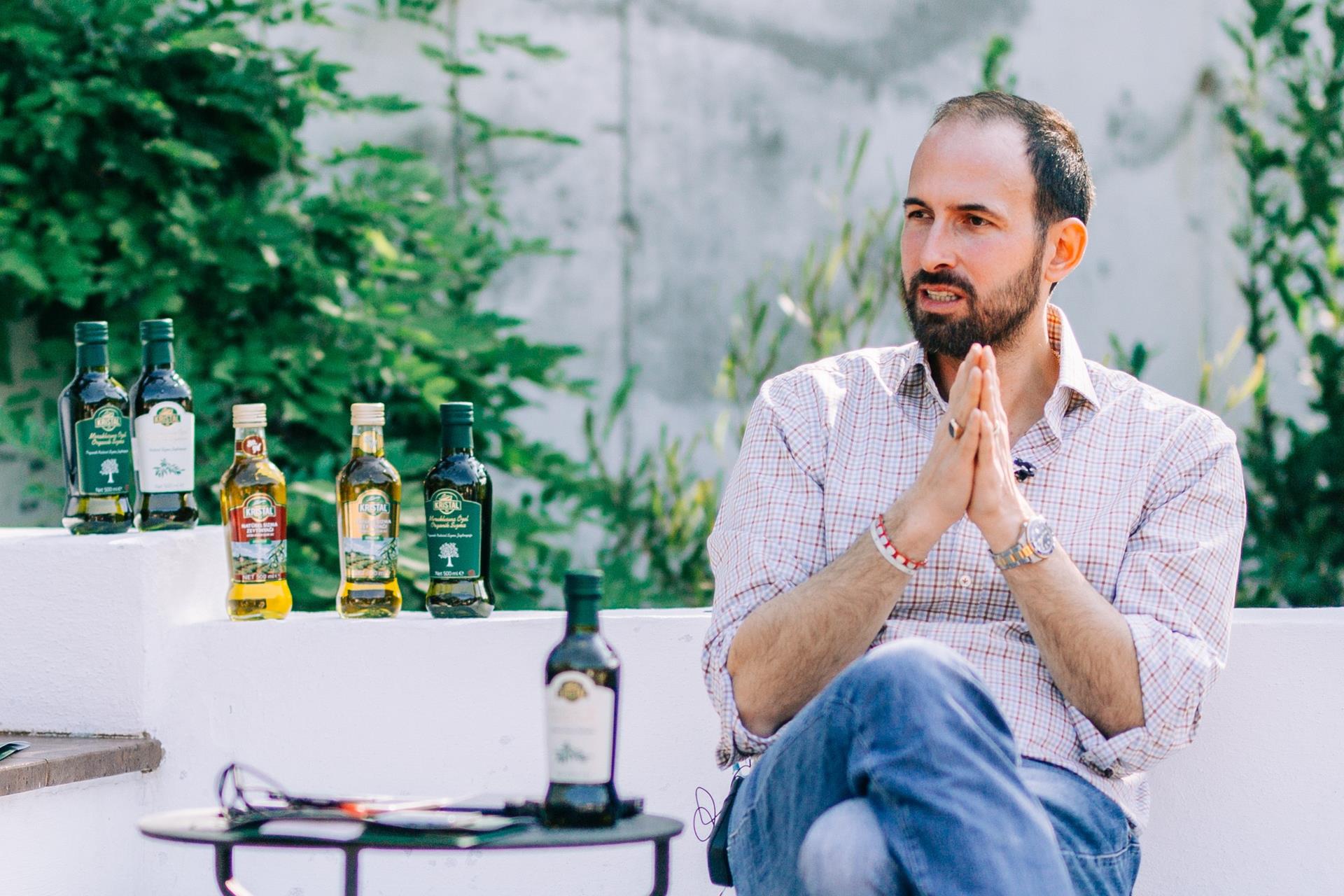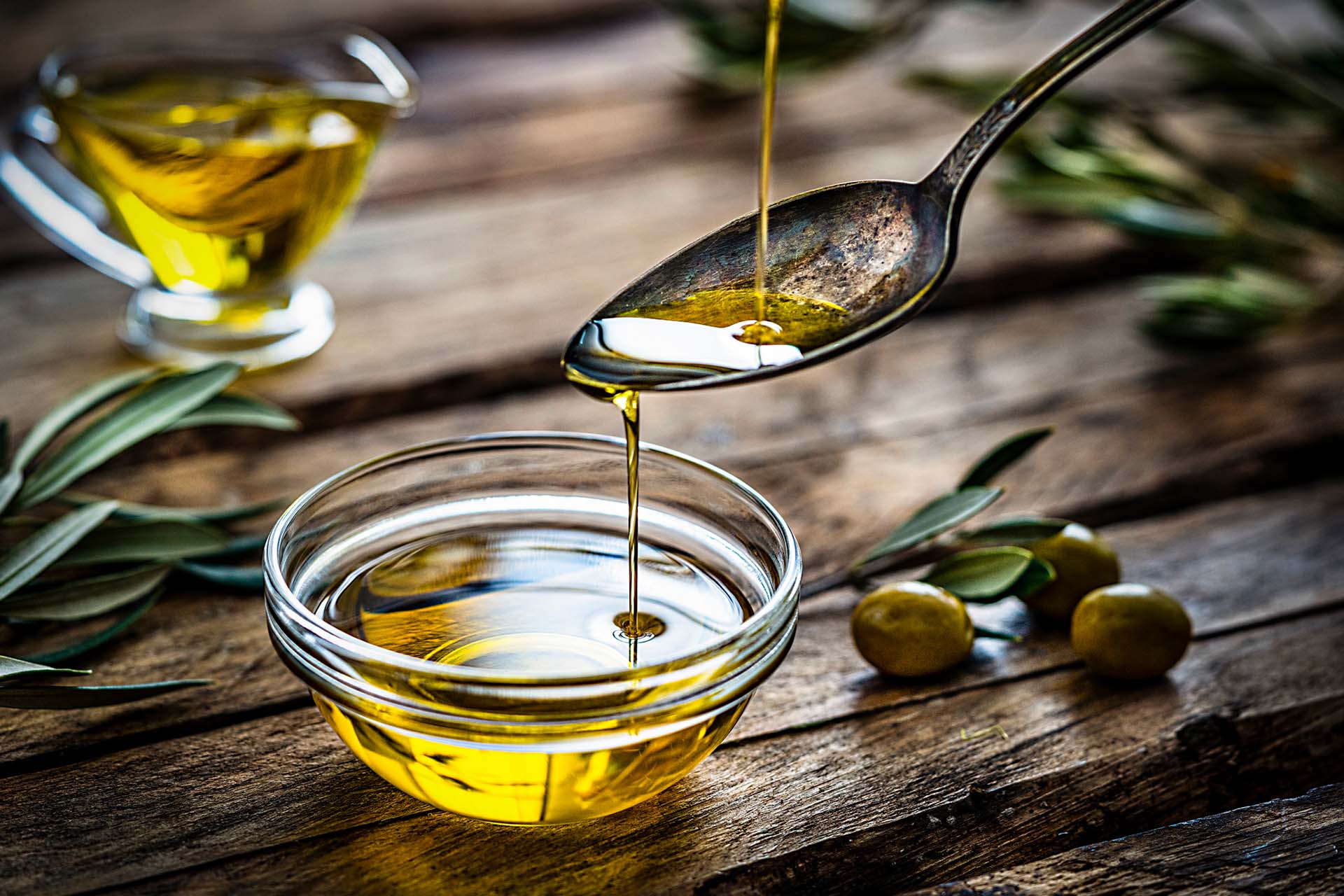Despite a slow and laborious growth, olive trees, a long-lasting and durable plant species, are described as the “Immortal Tree” in mythology and botany. As the world’s healthiest edible oil, olive oil is obtained from the fruit of this immortal tree which stays green throughout the year. But there is a lot of misconception about the taste, clarity, color, bitterness and quality of olive oil. Kristal Oil General Manager Christopher Dologh, evaluated some common misconceptions about this healthy and pure oil for Arkas News readers.
No frying with olive oil.
Wrong.
The conception that you cannot fry with olive oil is incorrect. Because the burning point of olive oil is similar to that of other vegetable oils and it is much more resistant to heat than other oils. The reason for the idea that “you can’t fry with olive oil” is actually the smoke produced in the frying process using extra virgin olive oil. The reason for this smoke is that the odor-causing components in extra virgin olive oil are dense and these components begin to evaporate in high temperatures. As the temperature increases, these volatile components, which are naturally present in olive oil, start mixing into the air. This, however, does not mean that the olive oil itself is being burnt. In deep fryers, the highest frying temperature is about 180-190 degrees. However, the burning point of olive oil is well above 200 degrees Celsius, as in other vegetable oils. All varieties of olive oil can be used in both hot and cold dishes. However, if you don’t want smoke you can fry with riviera olive oil. According to a study by Food Chemistry, the antioxidants and polyphenols in extra virgin olive oil are transferred to vegetables during cooking and frying, thus increasing their nutritional value.

You can tell the quality of olive oil by its color.
Wrong.
“Green olive oil is better than yellow olive oil” is a clear misconception that is also very common. Olive oil is a natural product and its color can range from yellow to green. In this respect, color is not a quality indicator for olive oil and it would be misleading to comment on oil quality by observing color. Depending on olive species, harvesting time or climatic characteristics, olive oil color may vary. This is why, for example, dark tasting glasses are used in tasting panels so that tasters are not influenced by oil color.
Olive oil with high acidity is bitter.
Wrong.
The concepts of bitterness and burning taste are not related to the acidity of olive oil, but to its other natural properties which actually contribute positively to our nutrition. Bitterness and burning sensation are positive sensory attributes for extra virgin olive oil which determine quality. A typical quality of the beneficial components found in extra virgin olive oil is that they add bitter and burning taste to the product.
Although free fatty acid in olive oil is a quality factor, it alone does not give us enough information about the quality class of olive oil. Extra virgin olive oil is free of defects and has a free acidity of less than 0.8% in terms of oleic acid. Olive oils with free acidity above 2% in terms of oleic acid are classified as crude olive oil. They are not suitable for direct consumption and contain undesirable taste and odor components.
Olive oil with low acidity may have a bad smell, taste or other characteristics of low quality. The same standard is used to determine the quality of olive oil, both in our country and in other countries. Accordingly, 150 different quality parameters, not just the acidity of the oil, are taken into account.
Olive oil goes bad if it’s left too long.
Wrong.
Not only olive oil but all oils dislike exposure to heat, light, foreign matters and air. Since the structure of olive oil is extremely resistant, if olive oil is stored in a cool, dark and dry environment in a sealed glass or tin package, it preserves itself throughout its shelf life. However, olive oil that is not stored under appropriate storage conditions may lose its quality before the recommended consumption date indicated on its label. For this reason, we advise our consumers not to store olive oil, or any oil for this matter, on the counter or under the sink.
It is better to use sunflower oil instead of Riviera
Wrong.
Olive trees yield olive oil, which is a very high quality oil. We do not find it right to compare any type of olive oil, i.e. extra virgin or riviera olive oil, with other vegetable oils. Because the body of olive oil contains monounsaturated, polyunsaturated and saturated fatty acids in the most appropriate ratio for human nutrition. Olive oil also provides enough omega 3 fatty acids for the human body and protects cardiovascular health as it is rich in monounsaturated fats. Extra virgin, like fruit juice, is packaged directly from the fruit as soon as it is squeezed. Riviera olive oil on the other hand, contains refined olive oil and virgin olive oil. We recommend everyone to consume olive oil in line with their means, whether they prefer extra virgin olive oil or riviera olive oil.
If the olive oil is bitter then is it aged. If you put salt in it, the bitterness goes away.
Wrong.
Extra virgin olive oil is supposed to taste bitter and burning. This is an indication of high nutritional values. But the authenticity of extra virgin olive oil must never be compromised. The English word for natural olive oil is “virgin”, which means that olive oil must be genuine and not interfered with. As a result, adding salt to extra virgin olive oil, using enzymes during olive pressing in the factory or mixing other oils into olive oil is prohibited by food legislation as it would impair the authenticity of olive oil. Aged oils (not only olive oil but all vegetable oils) smell like oil paint. In fact, this is not aging but spoilage and a product in this state must not be consumed.
Lithographic olive oil is the best olive oil.
Wrong.
Contrary to popular belief, olive oils produced with the lithography method contact air during production, which can oxidate olive oil and consequently decrease oil quality. The term lithography refers to the hydraulic pressing systems used in the past until the 20th century. However, such systems cannot produce extra virgin olive oil in accordance with today’s quality expectations.
Today, olive oil’s fruitiness, high bitterness and burning taste, and defect-free nature increase its gastronomic value, and its health benefits have also been proven in countless scientific studies. The most suitable oil for these definitions is “extra virgin” olive oil. Olive oil that is free of defects and has a free acidity of less than 0.8% in terms of oleic acid is extra virgin olive oil. Like fruit juice, extra virgin is packaged directly from the fruit once it is squeezed. The only process it is subjected to is filtration.
During olive oil production from olives, the method where production processes are carried out under 27°C is called “cold pressing”. During the production of cold-pressed olive oil, the olive pulp is not heated and the pulp temperature should remain under 27°C.
If the dish you cooked with olive oil freezes in the fridge, then it is genuine olive oil.
Wrong.
There are many parameters that influence whether olive oil starts to freeze or freezes completely. Depending on the olive variety, region, climatic characteristics, and harvest time, freezing may occur at various low temperatures for different periods of time. When the temperature of the storing environment falls below room temperature, a hazy appearance can be observed, and as the temperature drops further, it is natural to observe crystallization in the form of white particles. Whether or not olive oil freezes cannot be an indicator of its authenticity. Chemical analysis should be carried out to determine the absolute purity of olive oil. These analyzes can yield a certain result even if another vegetable oil is mixed in by just 1%.
Olive oil makes you gain weight.
No.
Fats are essential for our nutrition. Vitamins A, D, E and K, which our bodies require, are only transported to our cells by fats. It has been proven in scientific studies that olive oil consumed in the dietary model we call “Mediterranean-type nutrition”, which includes intensive olive oil consumption, prevents obesity by regulating the digestive system. This is also a common misconception.
Is it unhealthy to keep olive oil in tin cans for a long time?
Wrong.
As long as a product stored in quality tin can is sealed and stored under the right conditions so it doesn’t absorb heat and light, it preserves the sensory properties of olive oil.
The sediment at the bottom of an olive oil bottle is poisonous.
No.
Extra virgin olive oil is only subject to filtration procedure, after which it is packaged. Particles small enough to pass through the filter cloth may settle at the bottom of the container after a certain period of time. This is a natural phenomenon which indicates that olive oil preserves its naturalness in production. The appearance observed as turbidity or sediment is the result of the settling of the olive particles.
Olive oil that burns your throat has not gone through the right processes.
Wrong.
For extra virgin olive oil, bitterness and burning sensation are positive sensory characteristics which determine the quality of the product. If olive oil causes bitterness on the tongue and a burning sensation in the throat, this indicates that it is a quality olive oil that is very beneficial for health and is processed correctly.
Olive oil must be stored in a refrigerator.
Wrong.
Olive oil does not need to be refrigerated. 18°C to 22°C is as the ideal storage interval. However, our consumers can conveniently preserve their olive oils throughout their shelf life in the coolest, darkest and driest cupboard of their home.


